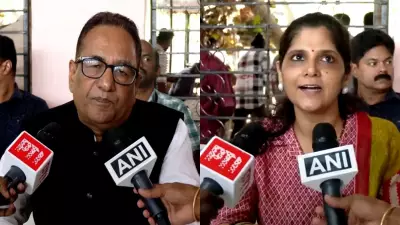
India is launching an ambitious mission to reverse one of its biggest challenges in science and technology: the exodus of brilliant minds to foreign shores. The government's new initiative to bring back Indian STEM professionals from abroad represents a potential watershed moment for the country's innovation ecosystem.
The Great Indian Brain Drain Conundrum
For decades, India has watched helplessly as its brightest science, technology, engineering, and mathematics graduates flocked to Western universities and corporations. This mass migration of talent has cost the nation countless innovations and research breakthroughs that could have addressed local challenges.
The newly proposed Vaishvik Bharatiya Vaigyanik (VBV) program aims to change this narrative by creating attractive pathways for overseas Indian scientists and researchers to return home. But as with any ambitious policy, the devil lies in the execution.
Why This Homecoming Matters Now
India stands at a critical juncture where scientific self-reliance isn't just desirable—it's essential. From climate change to healthcare challenges and technological sovereignty, having homegrown solutions developed by the best minds has never been more important.
The potential benefits are enormous:
- Accelerated research in cutting-edge fields like artificial intelligence and biotechnology
- Strengthened academic institutions through knowledge transfer
- Enhanced global competitiveness in technology and innovation
- Solutions tailored to India's unique developmental challenges
The Implementation Pitfalls That Could Derail Success
While the intent is commendable, several critical aspects need careful attention to ensure this doesn't become another well-meaning but ineffective program.
Academic Freedom vs. Bureaucratic Control
The biggest concern among the scientific community is maintaining academic independence. Returning researchers need the freedom to pursue innovative ideas without excessive administrative interference. The program must shield scientists from the bureaucratic hurdles that often plague Indian research institutions.
Infrastructure and Resource Gaps
World-class research requires world-class facilities. Many Indian institutions still struggle with inadequate laboratory equipment, limited research funding, and outdated infrastructure. Addressing these gaps is non-negotiable for attracting and retaining top talent.
Creating the Right Ecosystem
It's not just about bringing individuals back—it's about creating an environment where they can thrive. This includes:
- Competitive compensation that matches global standards
- Collaborative research opportunities with international peers
- Streamlined procurement processes for research materials
- Support for ambitious, high-risk research projects
The Road Ahead: Getting It Right
For this reverse brain drain initiative to succeed, policymakers must engage with the scientific community to design implementation frameworks that address these concerns. The focus should be on creating sustainable career paths rather than short-term assignments.
The return of India's scientific diaspora could catalyze an innovation revolution, but only if we build the right runway for their landing. Getting this right could transform India from a talent exporter to a global knowledge hub.





